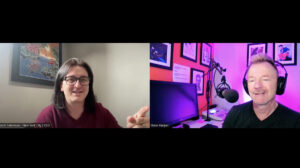Over the past year, in a coaching engagement, a client wanted to engage in inspiring and participating with their team to work together with more collaboration, communication, and commitment. These goals were to support individual and organizational culture enhancement. Here’s a high-level overview of how we applied the 5 A’s model to achieve meaningful results.
In this example, we will interchange Client and Leader. Both are the same person. The Sponsor is the Client’s/Leader’s champion or boss who will support this Client’s coaching journey both during and post the engagement.
In our February Newsletter, we explored the importance of setting KPIs. This study is an extension of how KPIs can be set thoughtfully (Keep an eye out for how to take action on these KPIs in our April Newsletter!).
1. Analyze: What is the focus of the coaching engagement?
- Work to define how the client (AKA leader) wants to address these opportunities; Prioritize how the leader’s actions directly impact the team through examples and actions
- Meet with this leader’s sponsors (Chair of Board & CHRO) to align around coaching goals
- Client completes a Gallup CliftonStrengths® and EQ Emotional Intelligence assessment to support this leader’s core understanding of their Strengths and EQ. The CliftonStrengths assessment is a performance-based tool that builds self-awareness and strength
- EQ supports self and social awareness, as well as self and relationship management strategies that lead to a higher level of understanding, compassion, transparency, and clarity of who someone is and how their motivating factors influence their ability to influence, build relationships, think, and execute with others
2. Accept: Explore data that allows the client to leverage their coaching goals/objectives with insights
- Investigate the leader’s own EQ to more deeply understand how to build EQ strategies to support them and their team collaborating through clearer communication
- Implement 360 Feedback that will provide data for the leader to apply to their leadership journey
3. Assess: Digest the 360 Feedback revealing that the team was struggling with change leadership
- The client engaged in models and tools that would support the team through change management; and allowed the team to process, share, and create a team game plan to acknowledge, change, and process their transition as individuals and as a team
- The leader/client agreed to implement:
- Well-planned strategic offsites
- Focus time; two hours weekly for ‘no-meetings’
- Allowing the team to process, think, and lead with strategic solutions (not tactical band-aids)
- Meet more regularly 1:1 with LT member
- Meet more regularly 1:1 with LT member
- Allowing the team to process, think, and lead with strategic solutions (not tactical band-aids)
4. Activate the assemble plan (also known as a growth plan) to pilot, experiment, and decide how to learn, grow, and invest in both themselves as the client and as a collective team
- While implementing the above three actions (A’s), the client paid attention to how the team was applying communication and collaboration to the various conversations and decisions being made
- The client provided strong feedback and strength observations during their touch bases
- Elevate self and social awareness to build their team’s EQ muscles
- Leveraged weekly focus time to craft agendas for each meeting this leader championed
- Created a template to memorialize each team’s members successes and opportunities
- This supported the leader/client in considering both team and individual trends that would support continued professional development, feedback, and coaching
- The client provided strong feedback and strength observations during their touch bases
5. Achieve: Recap how the leader/client created awareness, utilized data, and crafted action plans that would both enhance this leader’s impact and support the team’s grow
o As a result of the coaching, the team enhanced their collaboration and commitment.
o Because coaching is an investment in someone’s growth, the ripple effect was apparent in that the team benefited from the client/leader’s coaching of their team members individually and as a team.
Other actions because of this Coaching Engagement:
o Explore the team’s core strengths by engaging this leadership team in a Gallup Cliftonstrengths® Team Coaching Program.
Coaching is an ongoing process that takes time and effort – the best outcomes come to those who dive into their leadership capabilities, challenges, and opportunities to navigate the ever-changing workplace better. Want to start your own journey?



